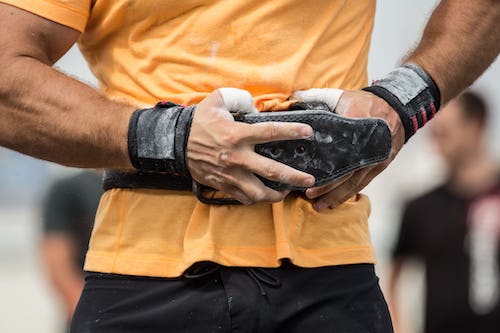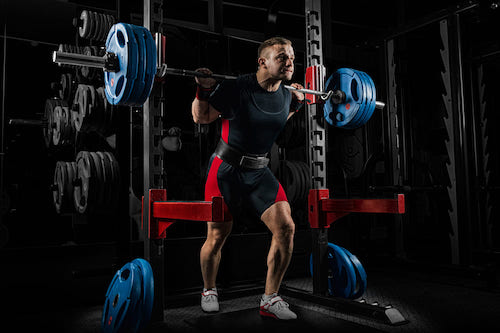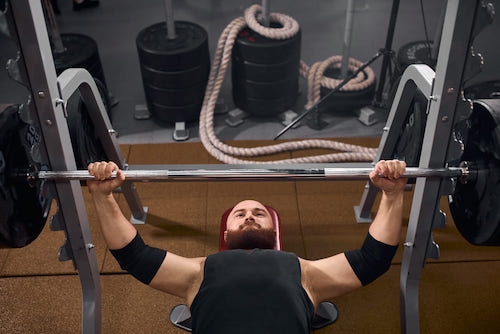Your cart is empty
Start Shopping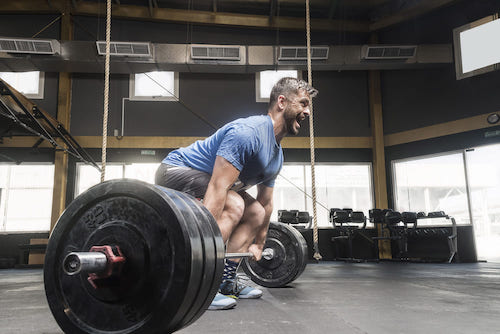
When it comes to lifting heavy weights off the ground, there are two primary ways to do it – sumo vs conventional deadlift. Both exercises are effective in their own way and target different muscle groups.
What is a sumo deadlift?
The sumo deadlift is a variation of the traditional deadlift. The weight is positioned on the toes, with the shins close to vertical and hands inside the knees. The lifter bends at the hips and knees, lowering the torso towards the ground until it is just above or parallel to it.
The sumo deadlift, as you can imagine, comes from Japan. It was a rarity outside of the nation up until the last 1970s. Legendary lifters, such as Inaba, had perfected the stance in the Land of the Rising Sun, but the form was yet to become a trend outside of that nation. It wasn’t until powerlifters like Carlos Luper from Indiana, as well as Mike Rogerio from Westside, started to employ it – for lifts over 300-pounds – that weightlifters around the world started to take notice.
Sumo deadlifts are a great exercise to use for building up your posterior chain. It makes you engage your hamstrings and glutes, which is important for stability and balance.
Deadlifting with a sumo stance is beneficial because it’s easier on the back. It causes less stress on the spine because it’s in a more natural position than when you’re doing conventional deadlifts.
Sumo deadlifts are also great for people who have lower back pain or hip problems as they can be done without putting any weight through the spine.
What are conventional deadlifts?
A conventional deadlift is a weight training exercise that targets the muscles in your lower back, hamstrings, glutes, and calves. It is often used as a way to measure strength in powerlifting competitions.
The deadlift begins with the lifter standing over a loaded barbell with their feet about hip-width apart. The lifter then bends down and grasps the barbell so that it rests on the ground just in front of its shins. They then lift it off the ground by extending their hips and knees until they are standing erect again. The end position of a deadlift sees the lifter holding onto the bar at shoulder height with straight arms.
Deadlifts are the most popular exercise in weightlifting. It is a compound movement that targets your glutes, back, hamstrings, and core. The conventional deadlift is a great exercise for strengthening the lower back and building muscle mass in your hamstrings.
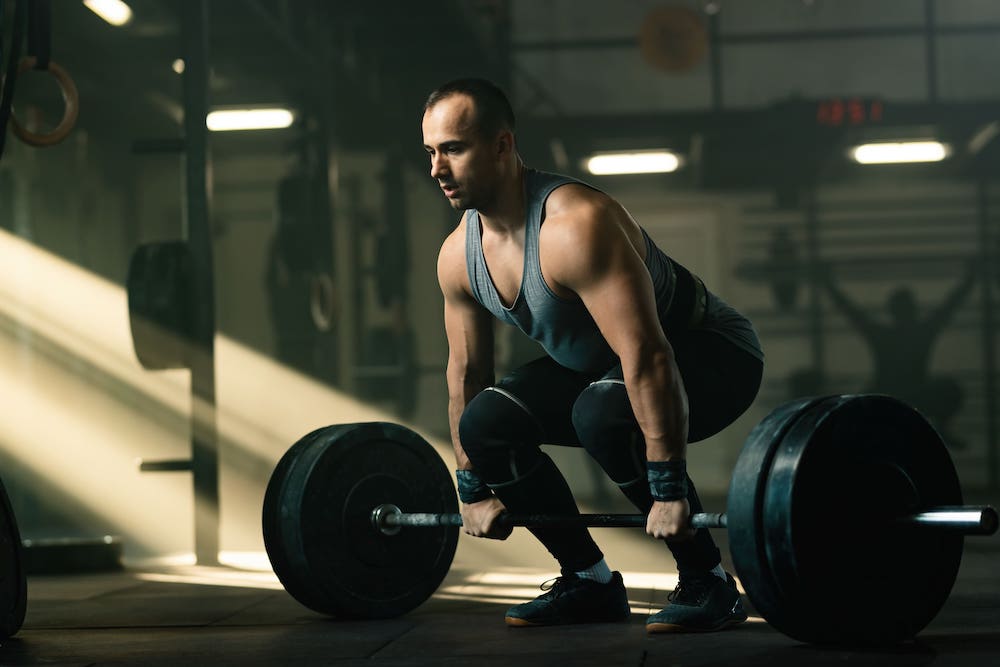
Deadlifts have been around since weight training exercises or shows of strength were a thing. One of the first mentions of it comes from the 6th century BC, from the Greek Island of Thera. They were a major Olympic-level event during those times. They were also heavily employed in military training, particularly during the Roman Empire days — soldiers needed to stay in tip-top shape for battle, so they needed to find a way not to get hurt while off the bloody field. They were taught proper lifting techniques by their commanding general, mainly to help them clear mangled corpses from the battlefield.
Benefits of conventional deadlifts include:
- Strengthens lower back
- Builds muscle in your hamstrings
- Builds strength in the upper back and core
Sumo vs conventional deadlift
There’s no definitive answer to sumo vs conventional deadlifts — they both target different muscle groups, and are employed for different training exercises. For example, conventional deadlifts are universally considered the ultimate test of overall body strength, this is because they combine pulls and pushes, with the upper body doing the pulling while the lower body does the pushing.
Difference between sumo vs conventional deadlift
Let’s break some of those differences down.
Stance
The conventional deadlift is a weight training exercise in which a person lifts a loaded barbell from the floor to the top of their thighs. The wider stance of the sumo deadlift puts you in a squat position, this engages glute muscles, and inner tight muscles to a greater degree, with more emphasis on the lower back and hamstrings.
Form
The sumo deadlift is an alternative style of deadlifting that has its own benefits and drawbacks and it all starts with its form.
Conventional deadlifts:
- Stand shoulder width apart, with tools pointed straight and foot underneath the bar.
- Bend and grab the bar at shoulder width.
- Hinge knees, squeeze shoulders together, straighten your head and chest, and pull the bar up.
- Keep the bar as close to your body as possible — sliding it down your body while maintaining control over its weight.
- Return to the starting position.
Sumo deadlifts:
- Spread your legs as far as you can – sumo stance – with your toes pointed at a 45-degree angle to the bar.
- Bend and grab the bar at shoulder-width level, with your hands close or to the inside of your knees.
- Hinge your hips, pull up, keep your shoulder protracted, straighter your head, and slide the bar as close to your body as possible.
- Extend to the top until your body is upright and facing forward.
- Slide the barbell down to starting position and rest.
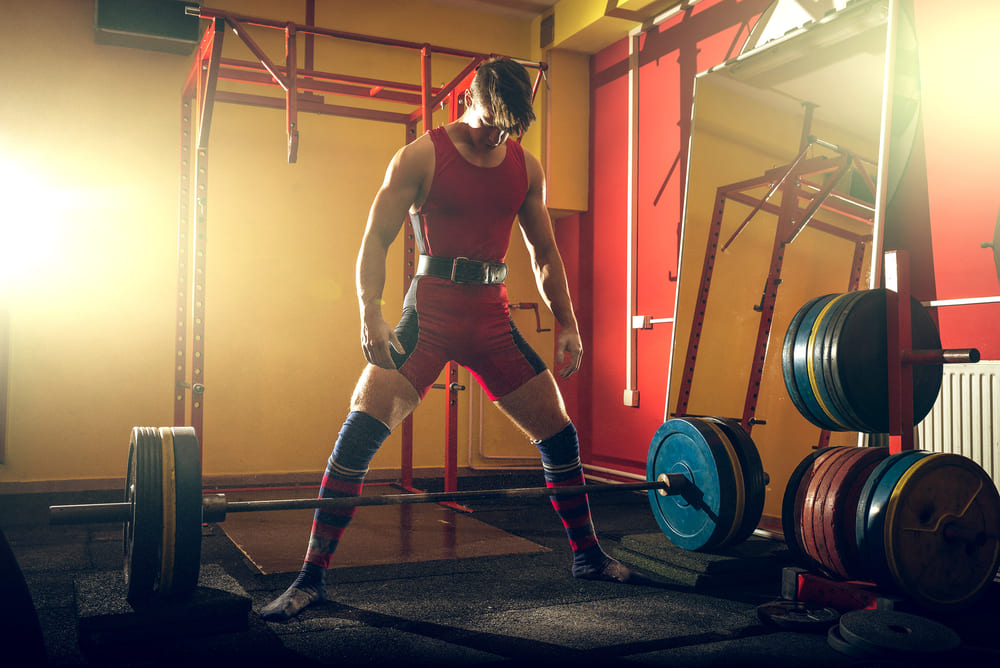
Difficulties between one and the other
Sumo Deadlifts are often seen as more difficult than conventional deadlifts— The sumo style is just different, with many people preferring one over the other for various reasons.
Should I deadlift sumo or conventional: what’s the best way to deadlift?
A couple of researchers, a few years ago, employed EMG – Electromyography – devices to measure the energy produced by skeletal muscles during each of these deadlifts, here are their findings:
- Sumo demands more quad muscle energy than the standard.
- Trapezius muscles are more engaged during the sumo stance.
- Conventional deadlifts pressure and exercise chest muscles with more ease.
- Conventional interacts more efficiently with arm muscle groups.
For overall strength development and muscle training, it’s important to practice both forms. Practice and percent both stance and form and incorporate them into your training sessions.

